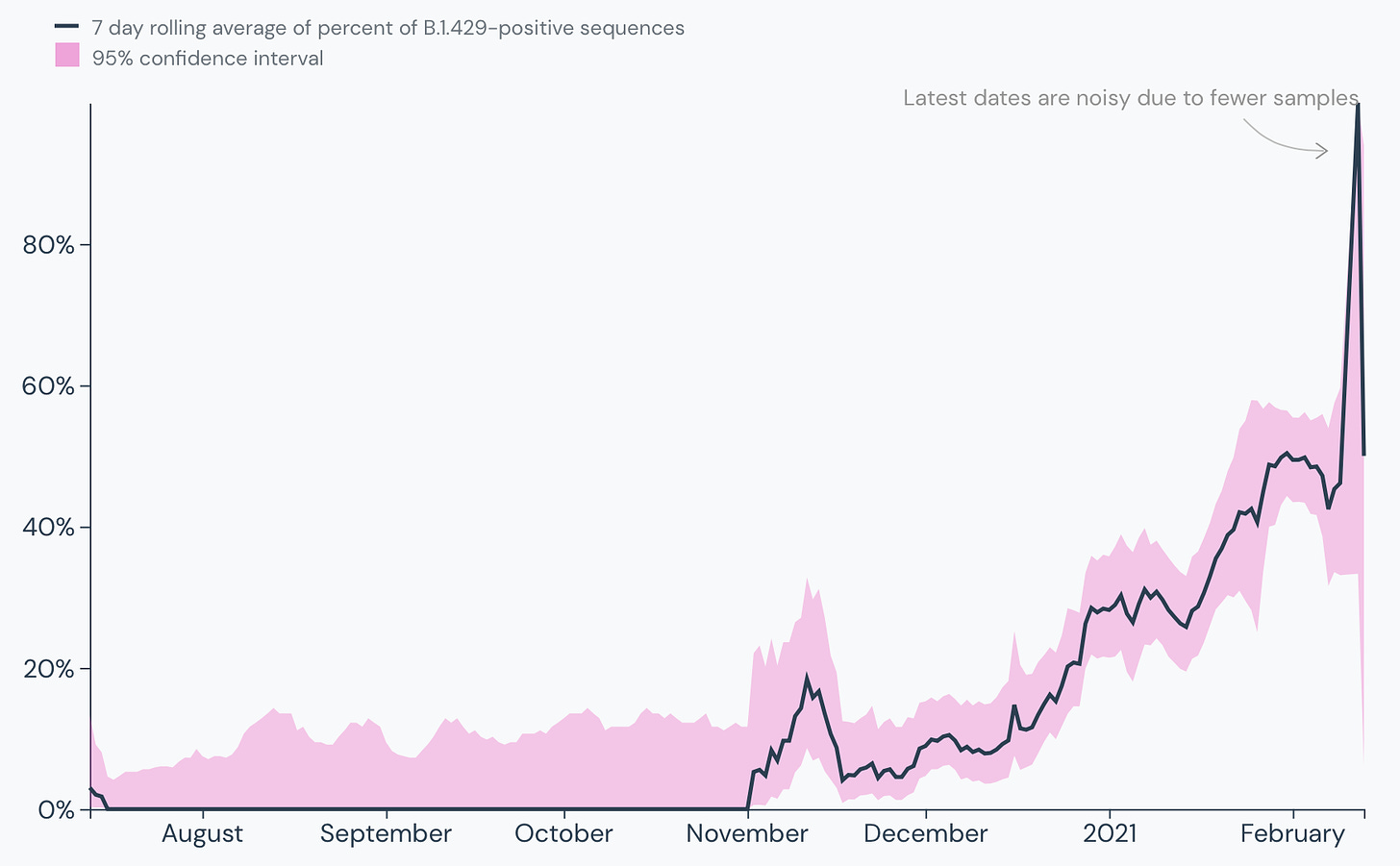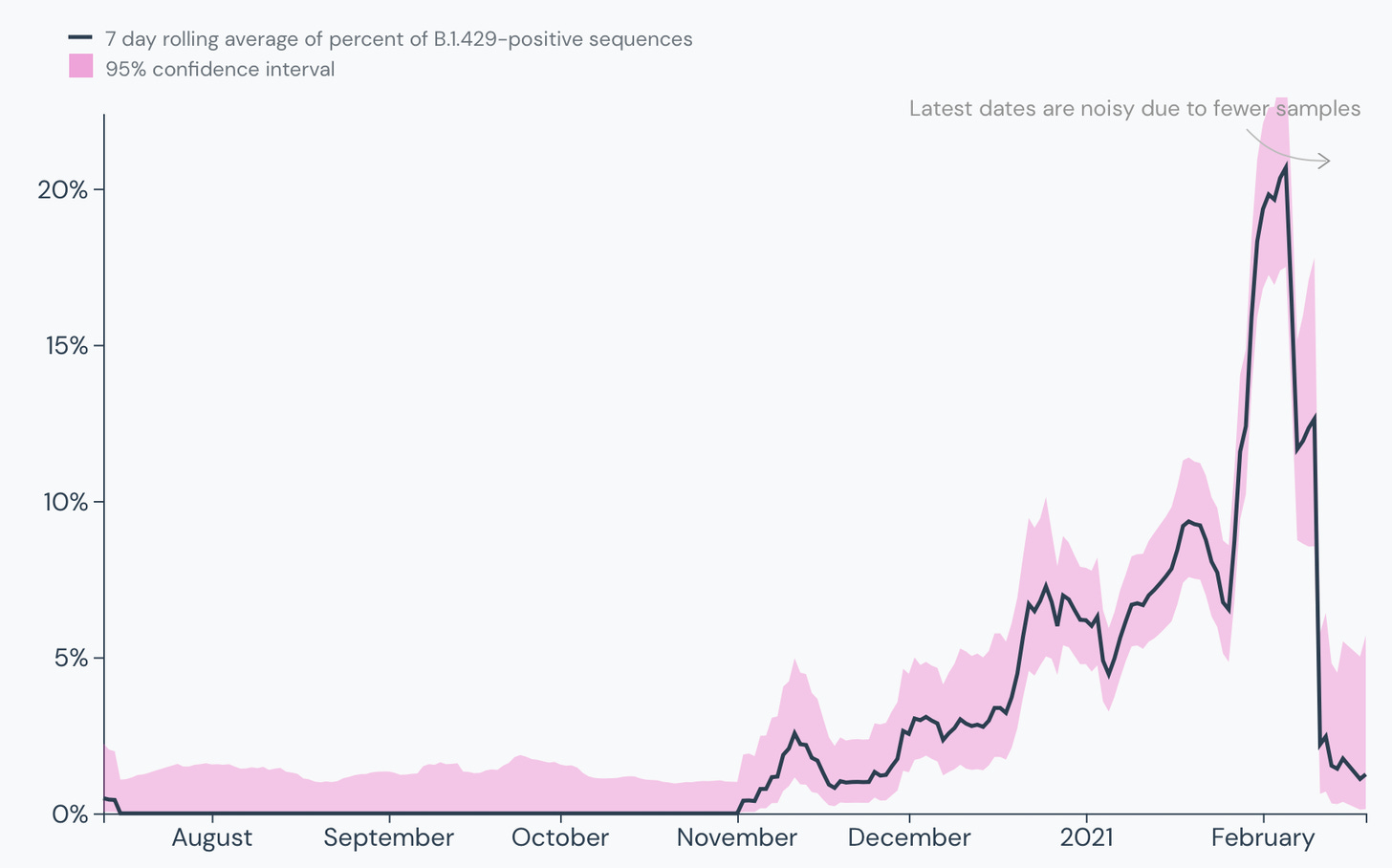B.1.427/B.1.429 was first detected in California. This is what we know so far…
Detection
There are two “forms” of this variant (B.1.427 is one form; B.1.429 is the other). Each have a slightly different combination of mutations, but they act very similar, so scientists combined the two for one variant name: B.1.427/B.1.429. This variant is also called CAL.20C/L452R
It was first detected in Southern CA in October and then by the University of San Francisco in December (although now we know it emerged in July 2020 in Los Angeles)
As of Feb 24, it’s been identified in ALL U.S. states and 19 countries
Interesting fact: It was detected in a gorilla at the San Diego Zoo- the only recorded case of COVID19 infection in an ape
Spread
It has a doubling time of 18 days
In four months (Sept 1, 2020 to Jan 29, 2021), the prevalence of the variant increased from 0% to 21.3% in CA
Today, about 20% of samples in the U.S. have the new mutation
Mutation Make-up
B.1.427 and B.1.429 both have 3 mutations on the spike protein (as well as other mutations, but we aren’t too worried about these)
Of the 3 spike mutations, we are most concerned about L452R, (the mutation changes L to R in our genetic material at the 452nd amino acid), which allows the virus to attach more tightly to cells and can escape antibody treatments.
Impact on Transmission and Disease
The story on this is a bit muddled because it’s much newer than, say, B.1.1.7. We are dependent on 1) pre-print studies (i.e. not yet peer reviewed); 2) leaked studies that scientists don’t have access to (but reporters do); and, 3) anecdotes. But this is what I’ve gathered so far…
In the lab, B.1.427/B.1.429 was shown to be three times more infectious
In a small hospital study (324 patients), patients who contracted B.1.427/B.1.429 were 4 times more likely to have been admitted to the ICU (13% of hospitalized patients with the variants were admitted to the ICU vs. 2.9% of hospitalized patients without the variants) and 11 times more likely to die (11.3% with the variants died vs. 2% of people without the variants). This sounds high, but there were very few patients in these groups, which could be driving the drastic difference. For example, these death statistics were based on “only” 12 deaths. We need a much bigger study to know the true pattern.
We also need patience when new, concerning variants pop up. Scientists are too methodical (rightfully so) to keep up with click bait headlines. We need to get this right so we know the public health implications as well as whether vaccines needed to be changed too.
There is also a concerning variant that was just detected in NY. I can describe this one next...
Love, YLE








Is there any data yet on how effective the two vaccines are in preventing hospitalization or death from infection by the new (particularly the California) variants?
Are tests routinely being tested for these variants? More concerningly, could we get to the point where the genetics are so different from the OG COVID we know and love that a sample might not test positive for COVID at all?